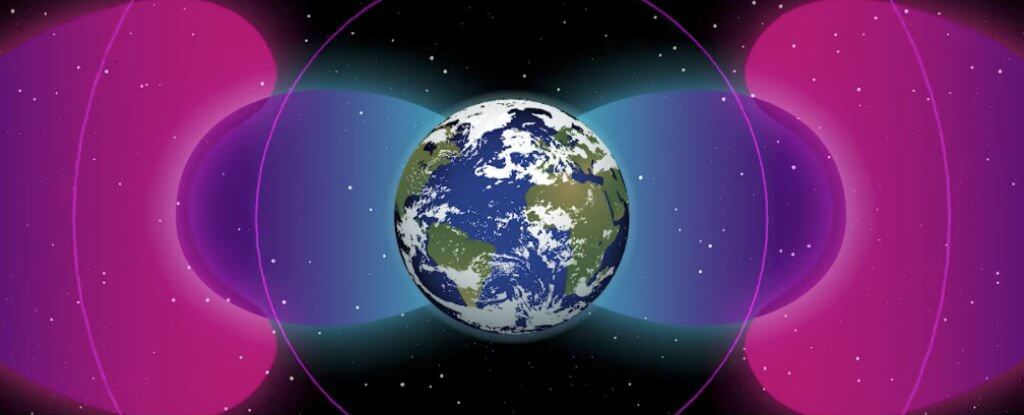- Get link
- X
- Other Apps

Scientists say that we are moving to a new era - the activity of mankind is already so high that we began to change even the cosmos. The space probes NASA launched into orbit determined the presence of some huge man-made "barrier" surrounding our Earth. Studies of the barrier show that it extends far beyond the atmosphere of our planet, affecting the cosmic weather. The good news is that, unlike our influence on the planet itself, the giant "bubble" that we created in space actually works in our favor.
In 2012, the US space agency NASA launched two space probes. Working in tandem, they study the "radiation belts of Van Alen". Our planet is surrounded by two such radiation belts (and one temporary). The inner belt stretches to a height of 640 to 9600 kilometers above the Earth's surface, while the outer belt is at altitudes of 13,500-58,000 kilometers.
Recently, NASA probes, observing the behavior of high-charged particles caught by the Earth's magnetic field, have discovered something strange - some low-frequency barrier that keeps dangerous solar particles, like a vice, and prevents them from moving further. Scientists decided to conduct a deeper analysis of the phenomenon and found that this barrier in fact over the past decades actively repels Van Alen's belts from the Earth, and now the lower limits of the cosmic radiation boundary are much farther from the surface of the planet than it was in the 1960s .
Effects
A certain type of communication, called very low radio frequencies (VLF), has recently become very common. They are used much more actively than in the same 60-ies. At the same time, NASA says that VLFs are able to influence the behavior and motion of cosmic particles. And according to the aerospace agency, with the help of these same VLFs, we got anthropogenic (that is, man-made) space near-earth weather.
"A number of experiments and observations have shown that, under suitable conditions, the radio communication signals transmitted through the VLF frequencies can influence the properties of the near-Earth highly charged environment," says Phil Erickson of the Highstar Observatory in Massachusetts, USA.
Most of us never encounter VLF signals, but they are very actively used in engineering, scientific and military operations. Since their range is only 3 to 30 kHz, they can not be used to transmit audio messages - they are too weak. However, they are great for transmitting encoded messages over long distances or deep, so they are often used to communicate with submarines. The length of their waves allows them to skirt large obstacles, so they are often used where there is a very difficult terrain.
Initially, scientists did not suspect that VLF signals can escape from the atmosphere, but as it turned out, they still succeeded, and, moreover, they are able to create a huge protective background. And this was confirmed by Van Allen's probes, which compared the positions of the boundaries of the "bubble" of VLF frequencies with the boundaries of the Earth's radiation belts.
"The size of the bubble exactly corresponds to the inner boundaries of the Van Allen belt," they say in NASA.
As soon as scientists found out that VLF signals can affect the motion of charged particles inside these belts, they realized that, in fact, a human-created barrier actively repels these belts from the planet.
Despite the fact that the VLF-bubble is at the moment, perhaps, the best example of the positive impact of humanity on the near-Earth space, this is definitely not the only example of the impact itself. In fact, we have been influencing the outer space surrounding us since the 19th century, and special activity on our part has taken place over the past 50 years, which have involved numerous tests of nuclear explosions.
"These explosions created artificial radiation belts near the Earth, which later even caused damage to several artificial satellites. Among other anthropogenic impacts on the space environment, various experiments on the release of chemical agents, heating of the ionosphere by high-frequency waves, as well as the interaction of VLF waves with the natural radiation belts of the planet, can be singled out, "the NASA report says.
As we already wrote in one of the previous articles, at one time the famous American astronomer Carl Sagan wanted to find traces of the presence of life on our planet from space. Taking into account such anthropogenic features can simplify the search for intelligent life on other planets.
The article is based on materials .
- Get link
- X
- Other Apps
Comments
Post a Comment